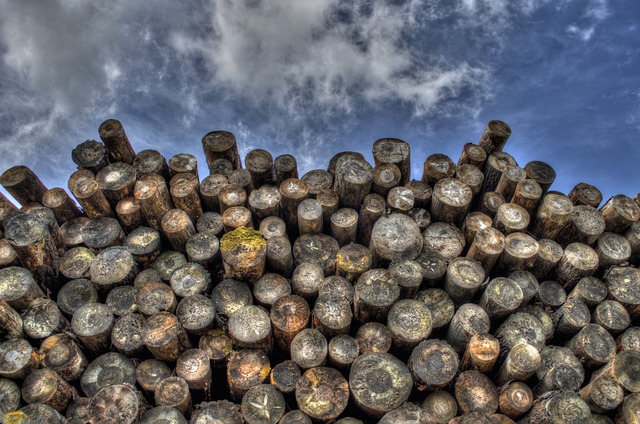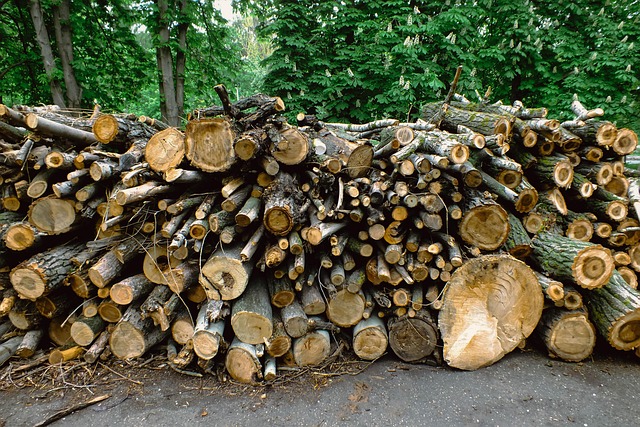Lane County, Oregon, boasts a rich history in the logging and timber industry dating back to the late 19th century. Initially driven by small-scale operations and local sawmills, it experienced exponential growth with the rise of powerful timber barons who expanded large-scale logging companies. This period left a significant mark on the county's economic and infrastructural development. Over time, the industry evolved, adopting advanced forest management practices focusing on sustainability and conservation. Today, Lane County balances ecological considerations with economic needs in its timber workforce, maintaining its historical significance while ensuring the longevity of its natural resources.
“Lane County, Oregon, boasts a rich history intertwined with its thriving timber industry, shaping its development over centuries. This article delves into the county’s past as a bustling logging hub, exploring the rise of timber barons and their mighty sawmills. From historical overview to modern practices, we examine how forest management decisions impact the local workforce. Additionally, we uncover the industry’s legacy and future prospects, highlighting its enduring role in Lane County’s development today.”
- A Historical Overview of Lane County Logging and Timber Industry
- The Rise of Timber Barons and Sawmills in Lane County
- Forest Management Practices and Their Impact on the Local Workforce
- Legacy and Future Prospects: How Lane County's Timber Industry Shapes Its Development Today
A Historical Overview of Lane County Logging and Timber Industry

The logging and timber industry in Lane County, Oregon, has a rich history dating back to the late 19th century when the region’s vast forests attracted entrepreneurs and workers alike. In the early days, small-scale logging operations dominated, with local sawmills processing timber for regional markets. The turn of the century marked a period of significant growth, leading to the rise of powerful timber barons who controlled much of Lane County’s forest resources. These industrialists established large-scale logging companies and built extensive networks of railroads to transport logs efficiently.
Over time, Lane County became renowned for its robust timber industry, with numerous sawmills springing up across the county. The workforce consisted of brave loggers who braved the forests, skilled millworkers, and various support personnel. This industry played a pivotal role in shaping the county’s economy and infrastructure, contributing to its development as a thriving community. Advanced forest management practices eventually emerged, focusing on sustainability and conservation, ensuring the long-term health of Lane County’s precious timber resources.
The Rise of Timber Barons and Sawmills in Lane County

In the late 19th and early 20th centuries, Lane County emerged as a bustling hub for the timber industry, marking a significant period in its development. The lush forests of this Oregon county became a magnet for ambitious entrepreneurs who recognized the immense value of its vast timber resources. As a result, a proliferation of sawmills sprang up across the region, driven by the demand for lumber in construction and manufacturing. This boom led to the rise of powerful timber barons, local business leaders who controlled vast logging operations and shaped the economic landscape of Lane County.
The timber industry’s growth was accompanied by an influx of workers, attracting a diverse workforce from rural areas and even distant states. These laborers, often referred to as loggers, played a pivotal role in harvesting and transporting the massive trees that fueled the county’s prosperity. Efficient forest management practices were adopted to ensure sustainable logging, ensuring the long-term viability of Lane County’s timber resources for future generations.
Forest Management Practices and Their Impact on the Local Workforce

The timber industry has been a cornerstone of Lane County’s economic development, with its history dating back to the early 20th century when powerful timber barons began shaping the region’s landscape. Over time, forest management practices have evolved, transitioning from extensive clear-cutting to more sustainable harvesting techniques. These changes have significantly impacted the local workforce, shifting from a large number of loggers and millworkers to a diverse range of positions focused on conservation, sustainability, and specialized logging operations.
Oregon sawmills, once bustling hubs that employed hundreds, now operate with advanced machinery and a smaller but highly skilled workforce. Forest management in Lane County today involves careful planning, ecological considerations, and the integration of indigenous knowledge, ensuring the industry’s longevity while providing for the region’s economic needs. This transformation reflects a broader trend in the industry, moving away from traditional logging practices towards a more balanced approach that considers environmental stewardship and community well-being.
Legacy and Future Prospects: How Lane County's Timber Industry Shapes Its Development Today

The Lane County timber industry has left an indelible mark on its development, with a history spanning back to the 19th century when timber barons first laid their eyes on the vast forests. This rich logging history has shaped not only the county’s landscape but also its economy and culture. Over time, the industry evolved, transforming from small-scale operations to large-scale commercial logging and establishing Oregon sawmills as integral parts of the local community.
Today, Lane County continues to be a prominent player in the timber sector, with responsible forest management practices ensuring the sustainability of its natural resources. The workforce, comprised of skilled loggers and millworkers, carries on the legacy, embracing modern technology while preserving traditional techniques. As the industry looks towards the future, it offers promising prospects for economic growth, employment opportunities, and a commitment to balancing environmental stewardship with development, thus solidifying Lane County’s place in Oregon’s timber-rich history.
